Such a well-known kitchen device as a mixer has occupied an honorable place in the arsenal of devices of almost every housewife for more than fifty years. The modern market is able to satisfy the consumer with any request due to the variety of these assistants, both in appearance and in function. Where does the modern mixer originate from and who came up with the bright idea of such an invention?
Mixer Invention History
It turns out that with such an idea, we should be grateful to the American Herbert Johnson, an engineer by profession. Impressed by the time-consuming process of making dough using conventional whisks in a bakery, Johnson invented the first model of an electric mixer. However, the bulkiness and high cost of the product made it possible to use it mainly in food industry enterprises. For home use, the mixer became available on the market in 1919. However, as before, it was a stationary bulky device made of metal, and the price was high for ordinary families - $ 190.
Subsequent modifications were distinguished by a lower price and smaller size. The mass production of the new product was taken by Sunbeam Mixmaster, which in 1952 announced the appearance of the most optimal version of this device. Its body was made of plastic, the corollas became removable, the device was easy to hold in your hand and carry around. A mixer appeared on the market, very similar to modern appliances.
What is a mixer? What are
The mixer is a device for mixing and whipping food products, used mainly for the preparation of confectionery.
Design and principle of operation
The mixer device consists of a plastic case, a cord and removable nozzles. Design features depend on the type of device. Inside the housing there is an electric motor and gearbox. On the case there are openings for cooling the engine, a button for switching on and switching modes, openings for nozzles. As a rule, the mixer works with two nozzles in the form of corollas made of metal. The engine drives the corollas, the rotation of which around its axis and performs the main function of the apparatus.
The mixer circuit is illustrated in the figure.
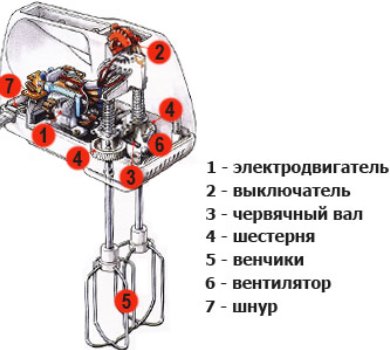
Kinds
The mixer may be:
- manual;
- stationary;
- planetary.
A hand mixer is most common in the household compared to other types. It is a portable device with nozzles and a power cord. The handle is part of the body. For whipping, you need to immerse the nozzles in a container with liquid products and turn on the mixer. This option is chosen because of compactness, ease of use and relatively low cost.
Unlike manual, the stationary mixer is a construction in the form of a platform on which the main part (the body with the engine and removable nozzles) is mounted, as well as a bowl in which the nozzles are immersed. Management is only a button press. You do not need to hold the device in your hands.
In some models, the main part can be folding or even removable.
In combined mixers, the removable part can be used independently.
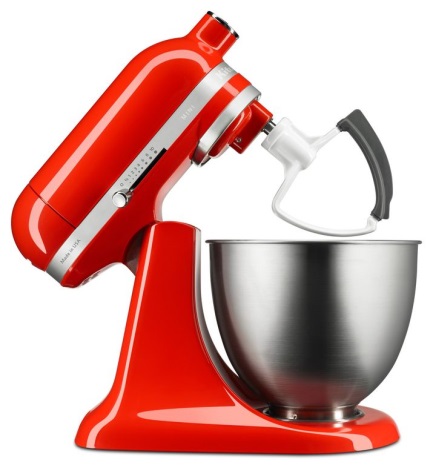
Stationary device with a folding part

Combined Mixer
Among stationary devices, there are professional ones that are used in the food industry. Mixers for making cocktails belong to a separate category.
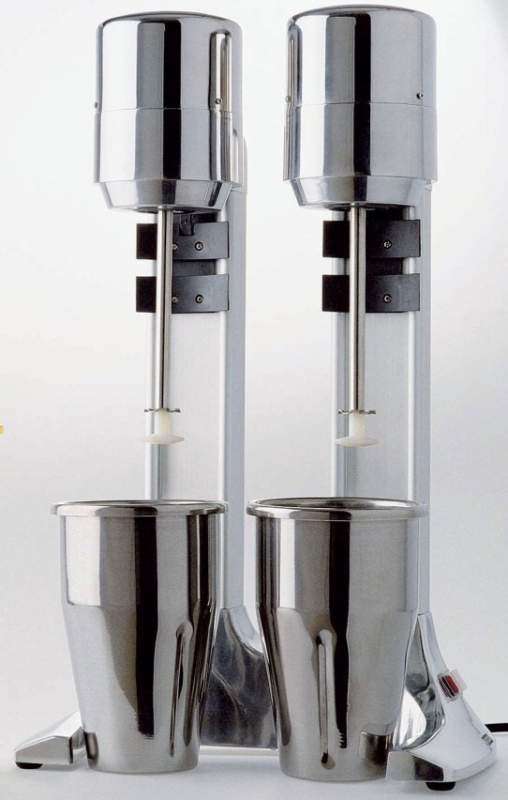
Milkshake mixer
The main difference between the planetary mixer is the principle of movement itself. Nozzles rotate not only around its axis, but also relative to the bowl. Such a device is stationary. Suitable for mixing bulk and dense masses.
In addition, the mixer may be part of another multifunctional device.
Which mixer is best to use at home
You can choose a mixer based on the criteria:
- quality;
- convenience;
- dimensions and parameters of the mixer;
- device functionality.
Quality and convenience
Quality before purchase can be assessed by studying only the appearance of the device. The sharp smell of plastic, chips or nicks, color irregularities give out products from cheap and low-quality plastic. It is unlikely that a self-respecting manufacturer will put a good mechanism in a cheap “package”.
Next, you need to take the device in your hand and hold it for a while, making sure of ease of use. Otherwise, the hand will quickly get tired and will have to make considerable efforts to achieve the desired effect in the process of whipping or mixing. You should also try to remove and reinsert the nozzles, check the operation of the power and shift buttons. These manipulations should be performed without much effort.
When checking quality, you should pay attention to nozzles. The main nozzles have a corolla shape. They are made in two ways. The whipping function is best performed by nozzles with corners of solid metal. In cheaper versions, the blades are made of wire. Such nozzles will perfectly cope with the mixing of products, but to beat eggs in the foam will be problematic.

wire nipples
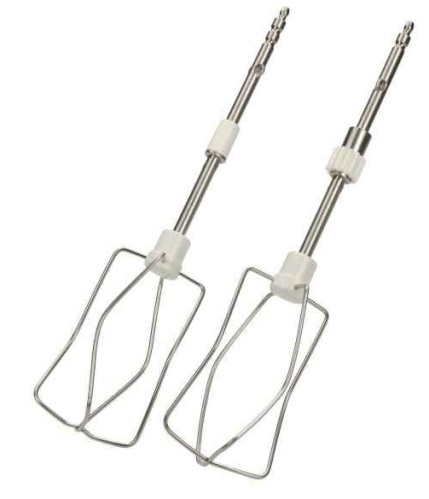
metal corollas
Functions
As for functionality, it is the type and number of nozzles that expand the tasks that the mixer can handle. In addition to whipping nozzles, today the market offers models with nozzles:
- for mixing in the form of spirals. These nozzles will help to mix the thick dough, while the main whisk nozzles can handle the liquid;
- for chopping products (blender);
- for making mashed potatoes and other vegetables, fruits. Looks like a disk;
- in the form of a separate bowl-bowl with a knife-impeller. Suitable for chopping in small amounts of herbs, nuts, dried fruits and other products.

set of nozzles
Today, manufacturers pay attention to the safety of using household appliances. Many models provide the function of disabling nozzles and their automatic removal. Safety of use is ensured by another possibility of some models - if the nozzles are not fixed correctly after pressing the power button, the engine will not work. Management can be carried out both by mechanical buttons, and the touch panel.
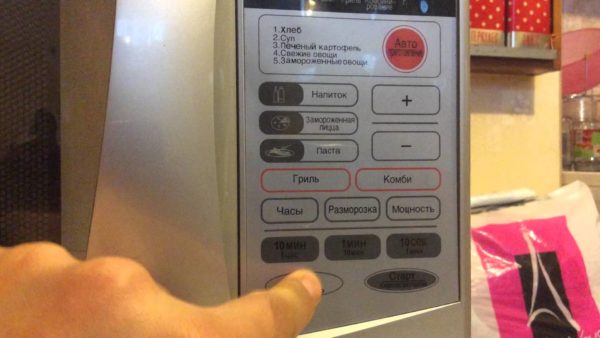
As additional options, manufacturers offer the presence in the case of compartments for the cord and nozzles, mounts for storing the mixer on the wall. In stationary models, there may be a timer.
Parameters. Power and Modes
So that the mixer does not disappoint the buyer after the acquisition, it is important to consider the main characteristics of the selected model.
The performance and speed of the mixer are determined by its power, which in different models ranges from 80 to 2000 watts. In addition to high speed, a really powerful unit guarantees high energy consumption.
For hand mixers, the indicated power is 150-250 watts. Although there are models with power up to 600 watts. Stationary mixers are justified for frequent work with large volumes, so their power is from 250 to 400 watts. A planetary mixer can be with a capacity of more than two thousand. Power over a thousand is found mainly in devices for professional use.
When choosing a mixer, the buyer may encounter the paradox that 600 W power may be indicated on cheap models, while the packaging of some expensive home appliances from reputable brands of professional equipment claims a very low power of 85 W. In pursuit of high parameters, it will be useful to know that often manufacturers of economic options use a marketing trick - they indicate in the instructions the maximum power with which the device can work only a few seconds after turning on, after which the speed of the mixers drops. Conscientious manufacturers indicate the average power at which a particular model works stably. At the same time, engine quality provides better performance than low-cost counterparts with declared high power.
The higher the speed, the better and faster the mass is whipped. At the same time, stir a thick dough or prepare some types of creams at low speeds. The number of speeds in different models varies from 2 to 5, although professional devices can provide up to 12 levels.
The model can be additionally equipped with:
- turbo mode, in which the speed and intensity of rotation increases briefly;
- pulse mode: the mixer turns on for a short period, determined by the time the button is pressed. The mode is needed to control the intensity of the mixing process, as well as when grinding solid products with a blender nozzle.
The dimensions and material of the bowl are relevant for choosing a stationary mixer. Devices with a plastic thicker are lighter and cheaper, however, less wear-resistant. Glass bowls are considered environmentally friendly and attractive, but require careful treatment. The most durable will be steel bowls. Such material increases the price of the device and makes it heavier.
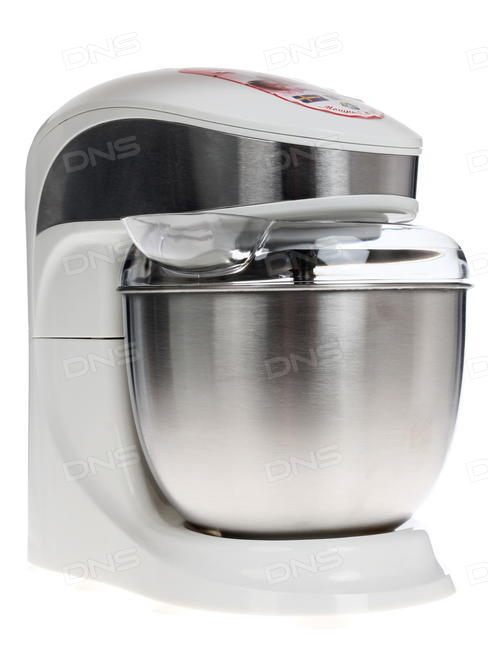
the bowl is protected by a glass lid
When choosing a stationary device, it is important to determine the required volume of the bowl. Its sizes can be from 1 to 7 liters (or from 1000 to 7000 cubic centimeters).
It is convenient if the design provides for the presence of a lid on the bowl, which protects against splashing during whipping.
How to use
The mixer can be used to mix various ingredients. You can mix both liquid products with each other, and liquid with dry ones (eggs with sugar, flour with kefir). This technique is used for making dough, omelet, drinks.
Another direct task of the mixer is whipping. For example, you can prepare a cream, whipping cream with sugar or egg whites with sugar, cocktails.
To work, you need to use nozzles suitable for specific products and actions with them. If you violate this rule, you can break not only the nozzles themselves, but also the mixer.
ATTENTION! For the free operation of the apparatus and the prevention of contamination of surrounding surfaces, the mass volume should fill the dishes no more than 2/3.
Before starting work, you must insert the nozzles into the mixer, turn on the device in the mains. To prevent splashing, it is recommended to first immerse the nozzles in a container with food mass, and then turn on the mixer, while gradually increasing the speed from minimum to necessary.
Turbo mode can be used no more than a few seconds. It is important not to exceed the maximum duration of continuous engine operation specified in the product manual.
Knowing the nuances listed in the article will help make a conscious choice. It cannot be said which device is better - stationary or manual. Each of them has its own purpose. The hand mixer is easy to use and compact. It is preferable for housewives who from time to time pamper their household members with delicious food. If baking is the daily task of the user, and in everyday life often yeast or shortbread dough, then with this amount of work a stationary appliance will do better. Such a mixer requires a separate permanent place on the work surface.
It makes sense to consider the purchase in the context of other kitchen devices. The mixer function may be provided by other devices. If in the future it is planned to purchase other devices for processing and cooking products, then you should pay attention to combines that cope with a variety of functions.
The price of the mixer is sometimes a decisive factor when buying. Cost forms a brand, a set of functions, parameters, material. Often the price is wound up with “doubtful” bells and whistles, such as 20 speeds or backlight. It will be more practical to buy a relatively simple, but high-quality device from a trusted manufacturer for relatively little money. Do not neglect customer reviews and acquaintances.
